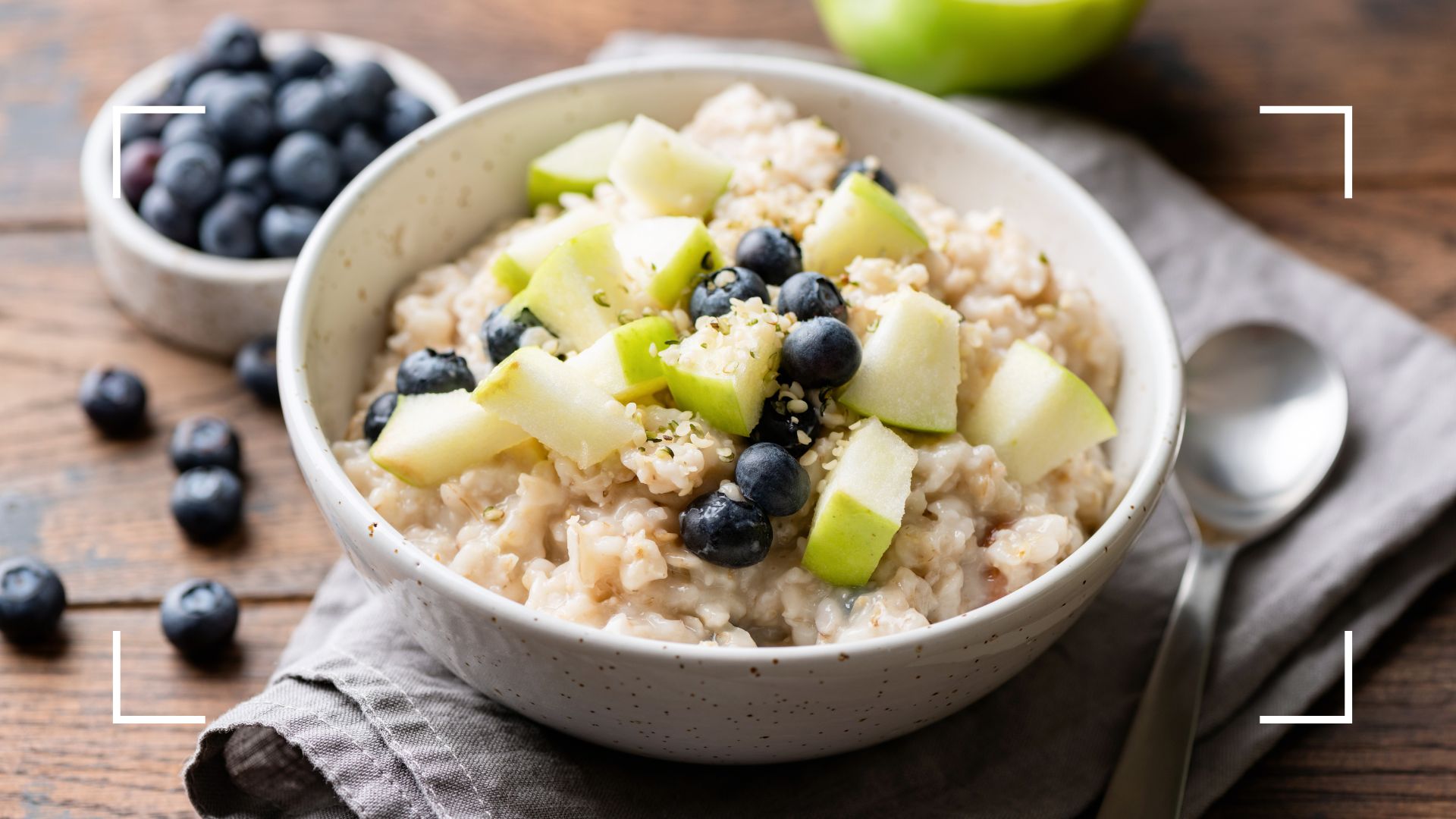What is the Cambridge Diet plan? Nutritionists reveal how the eating regime works for weight loss
The Cambridge Diet plan promises to help you slim down but does it work?


The Cambridge Diet plan or the 1:1 Diet by Cambridge Weight Plan, as it's now called, is one of the many restrictive eating plans out there promising quick weight loss results by reducing the number of calories you eat during the day.
No one should feel pressured to lose weight, whether for a particular event or a seasonal holiday. And even if you do follow the Cambridge Diet Plan, or any weight loss plan for that matter, you may not see the same results as someone else following the same eating plan. However, if you do want to drop a few pounds and are considering this plan as the way to do it, it's important to have all the information to make the right choice for you.
So what is the Cambridge Diet plan and how does it work for weight loss? With the help of two nutritionists, we've laid out everything you need to know - from how to get into a calorie deficit to lose weight to signing up for the plan itself. Plus, a final verdict on whether it's recommended by a nutritionist.
What is the Cambridge Diet plan?
The Cambridge Diet plan (now called The 1:1 Diet) is a very low-calorie diet, where regular meals are replaced by shakes, soups, bars, and porridges, explains nutritionist Signe Svanfeldt. "There are different levels to the diet, where you can keep certain amounts of so-called 'regular' meals depending on your goal with the diet, as well as how rapidly you want to lose weight," she says.
It has no relation to the Cambridge family, considering the Princess of Wales reportedly follows the Louise Parker Method. Instead, The Cambridge Diet was created by biochemist Dr Alan Howard, who worked at the Dunn Nutrition Laboratory in Cambridge (hence the name), and his partner Dr Ian McLean-Baird, a consultant at a local hospital. They launched the plan in 1984 as a weight-loss method for those who were clinically obese.
As Svanfeldt, who also works with healthy eating app Lifesum, says, the plan is based on a range of low-calorie pre-made meals that you buy from the company. These supposedly have a complete nutritional profile and are very low in calories, meaning a calorie deficit is easily achieved - providing you stick to the plan. Similar diets include the Jane Plan, which we also reviewed for ourselves on woman&home, and other weight loss meal delivery services.
Within The 1:1 Diet, there are six variations you can follow. It starts with step one (or 'Sole Source'), which is essentially a very low-calorie diet and goes all the way through to step six (or the 'Maintenance'). This is a healthy diet combined with meal replacements at points, depending on how quickly you want to lose weight and how much you want to lose.
Sign up for the woman&home newsletter
Sign up to our free daily email for the latest royal and entertainment news, interesting opinion, expert advice on styling and beauty trends, and no-nonsense guides to the health and wellness questions you want answered.
- Step 1: ('Sole Source'): Three to four Cambridge Diet meal products per day, working out to around 415-554 calories, for between one to 12 weeks.
- Sole Source +: Three Cambridge Diet meals and 200ml of skimmed milk per day, which is around 615 calories, for between one and 12 weeks.
- Step 2: Two Cambridge Diet meals plus protein-rich foods, skimmed milk, and some vegetables. This works out to about 810 calories a day, which you continue for between one and 12 weeks.
- Step 3: Two Cambridge Diet products, along with skimmed milk, breakfast, and salads for lunch and dinner, working out to about 1000 calories. You follow this for two weeks.
- Step 4: Two Cambridge Diet meals, along with skimmed milk, breakfast, lunch, and dinner. For two weeks.
- Step 5: One Cambridge Diet meal product. Along with skimmed milk, breakfast, lunch, dinner, and a snack, for two weeks.
- Step 6: A healthy diet, with Cambridge Diet products as supplements. Continued indefinitely.

How does the Cambridge Diet work?
The Cambridge Diet plan works for weight loss by pushing the body into an extreme calorie deficit, which is where you burn more calories than you consume during a day. Being in a large deficit will result in substantial weight loss as it forces your body into a state of ketosis - where you burn fat for fuel rather than food. It's a process that other weight loss diets, like the ketogenic diet, purposefully aim to create.
While you can achieve this deficit in lots of different ways, including restricted eating on the Cambridge Diet Plan, according to a leading study by the University of Vienna, it's the only method that actually works for weight loss.
Generally, a combination of both healthy eating and exercise is recommended for those who want to lose weight. However, as you're consuming so few calories when following the first few stages of the plan, it's recommended to only take on some gentle LISS cardio or easy cardio exercises like walking until you get used to the lower energy intake.
What are the advantages of the Cambridge Diet?
As well as the proven benefits of weight loss, it has many logistical positives, says Svanfeldt. "You save time cooking as you don't need to spend much time in the kitchen, which can be beneficial for those with a stressful schedule," she explains, and it's very versatile. "You can choose how many meals you want to replace. You don't have to cut regular foods from your diet, but choose to only replace one or two meals during the day."
It can also be a great tool of motivation for those at the beginning of a weight loss journey. "If you see results of weight loss, you might want to continue to strive towards your goal," she adds.
What are the disadvantages of the Cambridge diet?
However, cutting calories comes with a cost and there are serious side effects associated with eating very little even for a limited amount of time. "Low-calorie diets can contribute to symptoms such as fatigue, lethargy, dizziness, and an inability to perform optimally due to a lack of energy," says nutritionist Jenna Hope.
"In extreme circumstances, some GPs may recommend a very low-calorie diet to support weight loss. However, it is unlikely to be sustainable and it's not considered a particularly healthy way to lose weight. In such cases, ensuring you’re working with a healthcare professional is vital."
She continues, "Evidence from the University of California has suggested that low-calorie diets can increase appetite hormones which may drive up an appetite in the long run. Additionally, low energy intake can contribute to a downregulation of metabolism, which is responsible for our energy utilization, s the body attempts to conserve energy. Furthermore, very low-calorie diets can also downregulate subconscious movements as a second attempt for energy conservation."
Essentially, this means the Cambridge Diet plan will likely be unsustainable for most people as low-calorie diets often lead to feelings of hunger and cravings. "Naturally, when we feel restricted, we're more prone to falling into a binge-and-restrict eating cycle, which in turn leads to overeating," Hope explains. This is a very common pattern in restrictive dieting and can be why many people feel they are dieting but not losing weight over time.

How much does the Cambridge Diet cost and how do you sign up?
Prices vary from consultant to consultant but, on average, dieters can expect to pay around £2.61 for a meal.
Joining the plan is easy, you just need to sign up directly online. You can search for a consultant near you, plus read testimonies from other people.
Important rules to remember when following the Cambridge Diet
- Keep drinking water: Around 60% of your daily water consumption comes from the food you eat, so when consuming significantly less every day, you need to drink a great deal more H20 to compensate. The Cambridge Diet recommends sipping on at least 2.25 liters daily.
- Get plenty of sleep: Going to bed early for a good quality night's sleep will really help, especially in the first few weeks. Also, if you're fully refreshed and can avoid becoming overtired, you will feel less hungry and are less likely to struggle with cravings.
- Sip on tea: Another way of getting enough water is to drink herbal and fruit teas. Camomile tea will help you drift off at night and peppermint tea could help combat some of the potential side effects of the diet such as constipation. There are also many benefits of green tea for weight loss.
- Eat your greens: Stock up on delicious greens such as rocket, spinach, lettuce, watercress, cucumber, radishes, or celery for step three onwards in the plan when a leafy salad makes a nutritious low-calorie lunch choice.
A nutritionist's verdict
So should you give the Cambridge Diet a go? Here's what Lifesum's nutritionist Signe Svanfeldt has to say: "Following a diet where you replace your meals can be quite challenging to stick to in the long run, and the likelihood of gaining weight when introducing 'normal' foods again after just eating the replacements can be quite high," she warns. "However, if you live a stressful life, and just want to replace one meal or day with a meal replacement, it can be a convenient way of doing it. Or, if you need of losing weight for medical purposes and are advised by your doctor to do so, following a meal replacement diet can be the way to go."
On the whole though, it's vital to provide our bodies with a sufficient amount of energy and nutrients. So even if you're following the Cambridge Diet plan, you should still try to incorporate carbohydrates, healthy fats, protein, fiber, vitamins, and minerals in your eating.
"It’s vital to provide our bodies with a sufficient amount of energy and nutrients," says Svanfeldt. "Swapping meals for meal replacements can make it challenging to reach our daily requirements."

Grace Walsh is woman&home's Health Channel Editor, working across the areas of fitness, nutrition, sleep, mental health, relationships, and sex. She is also a qualified fitness instructor. In 2025, she will be taking on her third marathon in Brighton, completing her first ultra marathon, and qualifying as a certified personal trainer and nutrition coach.
A digital journalist with over seven years experience as a writer and editor for UK publications, Grace has covered (almost) everything in the world of health and wellbeing with bylines in Cosmopolitan, Red, The i Paper, GoodtoKnow, and more.
-
 Le Creuset has taken the gold standard literally — their 100 year launch features real gold and an iconic designer collaboration
Le Creuset has taken the gold standard literally — their 100 year launch features real gold and an iconic designer collaborationLe Creuset have turned 100 years old and to celebrate they have launched a new colour — Flamme Dorée — as well as a coffee table book with designers Assouline
By Laura Honey Published
-
 This chic, Brazillian perfume brand is our beauty team's secret to smelling expensive and unique
This chic, Brazillian perfume brand is our beauty team's secret to smelling expensive and uniqueFrom salty accords to modern twists on tuberose, there's a Granado perfume for every preference - but these 9 blends have our heart...
By Naomi Jamieson Published